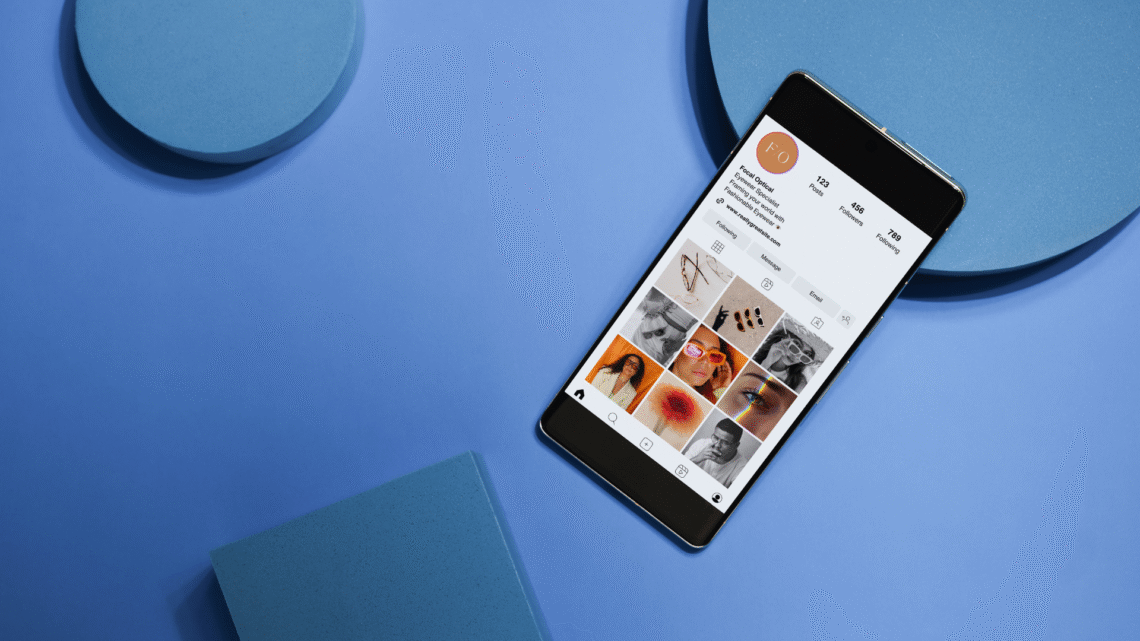
Using Social Media to Grow Your Fashion Brand: Strategies for Success
Social media has transformed the way fashion brands connect with their audience in the digital age. By crafting a strong online presence, fashion brands can engage potential customers, showcase their collections, and build a loyal community. Leveraging platforms like Instagram, TikTok, and Pinterest allows brands to reach a wider audience and convey their unique identity through visual storytelling.
Through targeted advertising and organic content, brands can effectively drive traffic to their websites and increase sales. Collaborating with influencers can also amplify reach and credibility, creating authentic connections with consumers. The ability to communicate directly with followers and receive instant feedback enhances brand loyalty and fosters a sense of community.
As the fashion industry continues to evolve, those who harness the power of social media will have a competitive edge. Maintaining a consistent and visually appealing brand presence online is crucial for attracting and retaining customers. Engaging content that resonates with the target audience will not only elevate brand visibility but also solidify a brand’s position in the marketplace.
Building a Strong Foundation
Creating a solid foundation is crucial for any fashion brand looking to thrive on social media. By understanding the target audience, crafting a consistent brand image, and integrating with an e-commerce website, brands can enhance recognition and trust.
Understanding Your Target Audience
Identifying the target audience is the first step in building a strong foundation. Conducting market research helps uncover demographics, preferences, and behaviors. This data aids in tailoring content that resonates with potential customers.
Utilizing social media analytics can further refine audience insights. Brands should observe engagement metrics to determine what types of content attract their followers. Crafting buyer personas is also effective for visualizing customer needs and preferences.
Crafting a Consistent Brand Image
A consistent brand image fosters recognition and trust. This involves maintaining uniformity in visual elements, tone of voice, and messaging across all platforms. Color schemes, fonts, and logos should be easily identifiable and representative of the brand’s ethos.
Brands should curate content that aligns with their values and appeals to their audience. Engaging storytelling can evoke emotions and create a connection. Regularly reviewed guidelines help ensure that all posts reflect the brand accurately, establishing credibility in the crowded fashion space.
Integrating with Your E-commerce Website
Seamless integration with an e-commerce website enhances the customer experience. This includes creating links to products directly in social media posts, enabling a frictionless shopping journey.
Using platform features like Instagram Shopping or Facebook Shops can drive traffic directly to the site. Regular updates, such as product launches or sales announcements, should be communicated effectively.
Clear calls to action encourage user engagement and can lead to increased sales. Keeping the website optimized for mobile users ensures a smooth transition from social media to shopping.
Strategic Social Media Marketing
A focused approach to social media marketing is vital for growing a fashion brand. Key elements include a solid marketing strategy, engaging content, partnerships with influencers, and the use of user-generated content. Each of these areas contributes to building a brand’s identity and enhancing customer engagement.
Developing a Marketing Strategy
A comprehensive marketing strategy serves as the foundation for effective social media efforts. This includes identifying target audiences, defining brand messaging, and selecting the right platforms.
- Target Audience: Research demographics, interests, and behaviors to understand who engages with the brand.
- Messaging: Establish a consistent tone and voice that resonates with the audience.
- Platform Selection: Choose platforms like Instagram, TikTok, or Pinterest based on where the target audience spends time.
Setting clear goals, such as increasing brand awareness or driving sales, guides content creation and audience engagement.
Creating Compelling Content Marketing
Compelling content attracts and retains followers. This involves crafting visuals and narratives that are aesthetically pleasing and resonate with the audience’s aspirations.
- Visual Elements: High-quality images and videos showcasing products in lifestyle contexts enhance appeal.
- Storytelling: Connect with the audience through stories that convey brand values and product benefits.
- Content Types: Mix formats including posts, stories, and reels to keep the audience engaged and encourage sharing.
Consistent posting schedules help maintain visibility and engagement over time.
Leveraging Influencer Collaborations
Working with fashion influencers can amplify a brand’s reach and credibility. Selecting the right influencers is critical to ensure alignment with brand values and audience.
- Influencer Selection: Identify influencers whose followers match the target demographic and who share similar aesthetics.
- Collaboration Types: Consider sponsored posts, product reviews, or co-branded collections.
- Authenticity: Ensure collaborations maintain authenticity through organic integration of products into influencers’ content.
Measuring the success of these partnerships through engagement metrics helps determine future collaborations.
Utilizing User-Generated Content
User-generated content (UGC) fosters community engagement and brand loyalty. Encouraging customers to share their experiences with the brand enhances social proof.
- Incentives: Create campaigns that reward customers for sharing photos wearing products, such as discounts or features on brand pages.
- Hashtags: Establish a unique brand hashtag to make UGC easily discoverable and encourage participation.
- Showcasing UGC: Regularly feature user-generated content on brand channels to highlight customer voices and create a sense of belonging.
This approach not only builds trust but also expands organic reach through the customers’ networks.
Maximizing Engagement and Conversion
Strategically enhancing engagement and conversion rates is crucial for a fashion brand’s success on social media. Implementing tactics like contests, retargeting ads, and detailed analytics can significantly boost interaction and sales.
Driving Engagement with Contests and Giveaways
Contests and giveaways are powerful tools for increasing engagement. They encourage users to interact with a brand and share the content with their networks.
To execute effectively, brands should consider:
- Clear Entry Rules: Specify how participants can enter, such as liking, sharing, or tagging friends.
- Appealing Prizes: Offer items that resonate with the target audience, such as exclusive merchandise or gift cards.
- Time Limits: Create urgency by setting deadlines for participation.
Engagement rates often spike with these tactics, as followers feel a sense of community and excitement. Additionally, successful contests can lead to increased social media followers and a broader audience reach.
Boosting Conversions with Retargeting and Discounts
Retargeting campaigns can enhance conversion rates by reminding potential customers of products they have shown interest in.
Fashion brands should:
- Use Dynamic Ads: Serve personalized ads featuring products users previously viewed, increasing relevance.
- Offer Exclusive Discounts: Pair retargeting with unique discount codes to incentivize purchases.
By creating tailored ads, brands can effectively convert engaged users into customers. Specifically, Dynamic Product Ads, which automatically display products based on user behavior and preferences, play a key role in this process. Studies show that retargeting through such personalized ad formats can increase conversion rates by as much as ten times, reinforcing the effectiveness of this strategy.
Leveraging Analytics for Enhanced ROI
Utilizing analytics is crucial for measuring campaign performance and optimizing strategies. Brands should focus on key metrics like engagement rates and conversion rates.
Steps to enhance ROI include:
- Identify High-Performing Content: Analyze what type of posts generate the most interaction and adjust future content accordingly.
- Monitor Audience Behavior: Examine how different demographics engage with posts to tailor marketing strategies.
- A/B Testing: Test variations of ads to determine what resonates best with the audience.
By leveraging data-driven insights, fashion brands can refine their approaches, ensuring that marketing efforts yield the highest return on investment.
Innovative Trends and Tools
Fashion brands are continuously exploring new technologies to engage their audiences and streamline operations. This includes leveraging augmented reality, artificial intelligence, and advanced social media management tools to enhance their presence.
Adapting to Augmented Reality and Virtual Marketing
Augmented reality (AR) offers brands a unique opportunity to provide immersive shopping experiences. Virtual try-ons enable customers to see how clothes look on them through their devices. Platforms like Instagram and Snapchat support AR features that allow users to interact with products virtually.
This interactive approach can significantly boost customer engagement and conversion rates. Brands can create AR filters for virtual fashion shows or tailored shopping experiences, making the browsing process fun and engaging.
Implementing AR does not require a large budget. Even small brands can utilize existing apps to create simple AR experiences that capture attention and enhance brand visibility.
Utilizing Artificial Intelligence and Chatbots
Artificial intelligence (AI) transforms customer interaction and personalization in fashion retail. AI algorithms analyze customer behavior and preferences, allowing brands to offer tailor-made recommendations.
Chatbots powered by AI can efficiently handle customer inquiries and elevate user experience. They provide instant responses, whether for product inquiries or order status updates. This technology not only improves customer satisfaction but also reduces the workload of human customer service representatives.
Furthermore, AI can analyze sales data and social media trends to inform marketing strategies. This data-driven approach helps brands stay relevant and responsive to changing consumer demands.
Innovating with Social Media Management Tools
Social media management tools streamline content scheduling and performance tracking. Platforms such as Hootsuite and Buffer enable brands to manage multiple accounts simultaneously, ensuring consistent messaging.
These tools provide insights into audience engagement, helping brands refine their strategies. Key metrics such as likes, shares, and comments can guide content creation and posting schedules that resonate with target audiences.
Additionally, brands can use these tools to monitor competitors and industry trends. Staying informed enables brands to adapt quickly and effectively to market shifts, maintaining a competitive edge.




